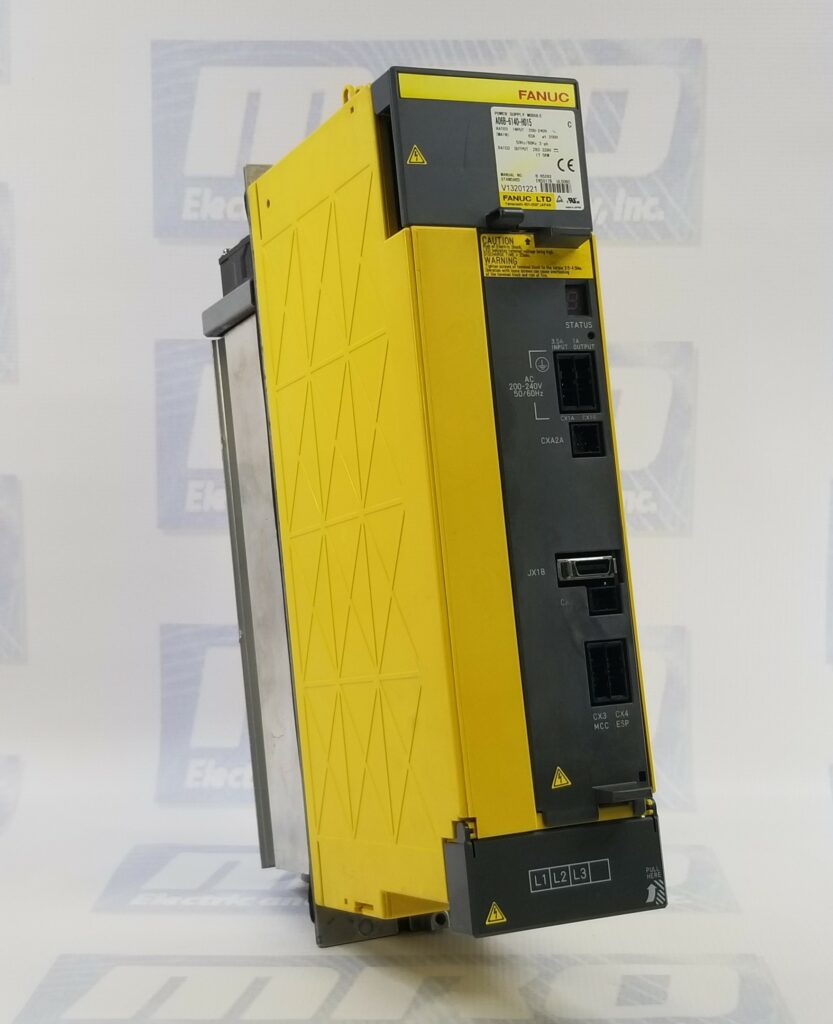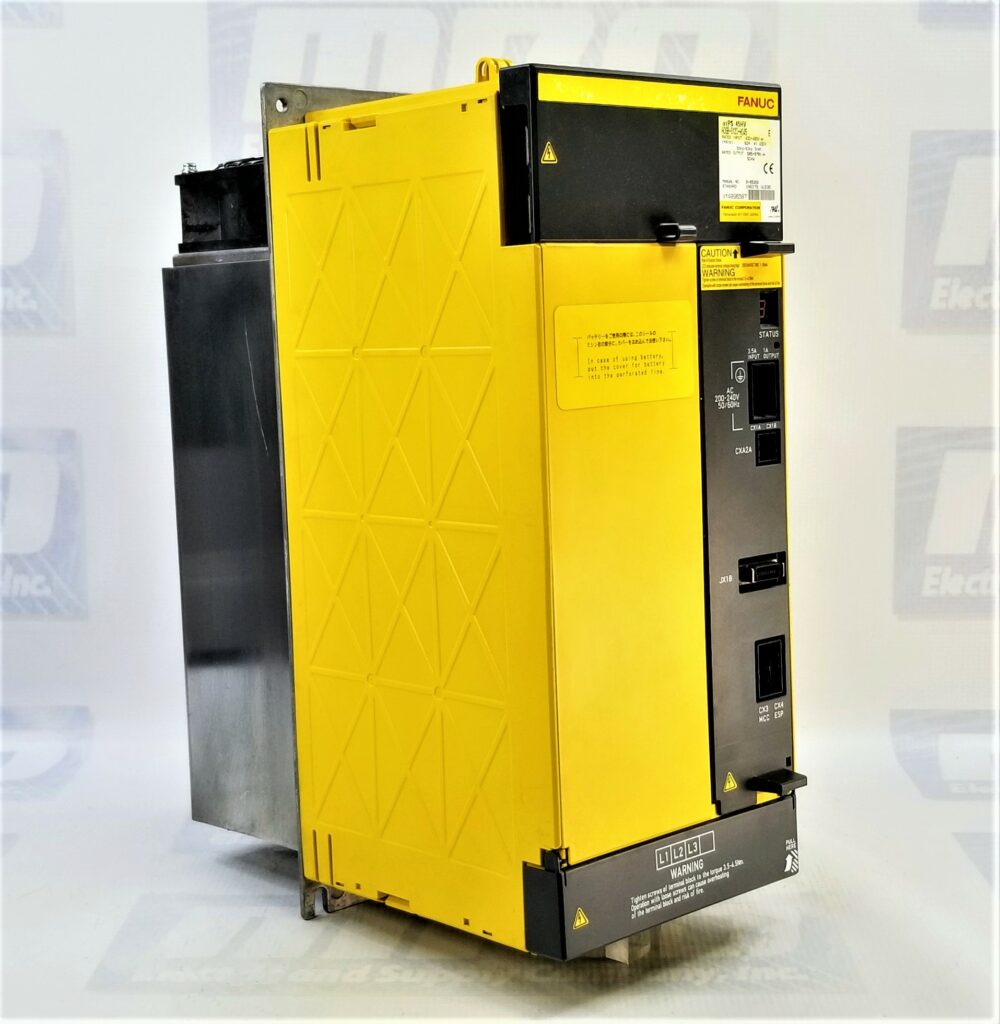Power supplies are the lifeblood of any industrial automation system, and Fanuc power supplies are no exception. These critical components ensure that your machines receive a stable and reliable source of electrical power, enabling them to function efficiently and accurately. However, like any other electronic equipment, Fanuc power supplies can encounter issues that disrupt production and lead to costly downtime. In this comprehensive guide, we will delve into the world of troubleshooting Fanuc power supplies, equipping you with the knowledge and tools to identify and resolve common problems effectively.

Understanding Fanuc Power Supplies
Before we dive into troubleshooting, it’s crucial to have a basic understanding of Fanuc power supplies. These units are responsible for converting the incoming electrical power (typically AC voltage) into the required DC voltage to operate various components within a CNC (Computer Numerical Control) system. They play a pivotal role in ensuring that the control system, servomotors, and other machine components receive the right voltage and current for smooth operation.
Common Issues with Fanuc Power Supplies
Fanuc power supplies are robust and reliable, but they can still experience problems over time. Here are some common issues you might encounter:
- No Power Output: The power supply fails to provide any output voltage, resulting in a complete machine shutdown.
- Voltage Fluctuations: The output voltage fluctuates, leading to erratic machine behavior and potential damage to sensitive components.
- Overheating: Excessive heat generation within the power supply can lead to thermal shutdowns or even permanent damage.
- Fuse Blown: Frequent blowing of fuses can indicate a problem within the power supply or an overload in the connected equipment.
- Noise and Interference: Poorly filtered power supplies can introduce electrical noise into the system, causing erratic operation or sensor errors.
- Inadequate Output: The power supply might not provide enough current for the connected devices, leading to operational issues.
Troubleshooting Fanuc Power Supplies
Now that we’ve identified some common issues let’s explore how to troubleshoot and resolve them:
1. Check the Power Input
The first step in troubleshooting a malfunctioning power supply is to verify the incoming power source. Ensure that the power supply is receiving the correct voltage and frequency as specified in the manufacturer’s documentation. Use a multimeter to measure the input voltage and compare it to the rated values. If the input power is incorrect, you may need to address issues with your facility’s electrical supply or check for loose connections.
2. Verify Output Voltage
Once you’ve confirmed the input power, the next step is to check the output voltage of the power supply. Using a multimeter set to DC voltage measurement, measure the output voltage. If the power supply is functioning correctly, the output voltage should match the rated value. Any significant deviations could indicate a problem with the power supply unit.
3. Inspect the Fuses
Blown fuses are a common issue in power supplies. Check all the fuses within the power supply unit to ensure they are intact. If you find any blown fuses, replace them with fuses of the same rating. However, if the new fuses blow immediately, it could indicate a more significant problem within the power supply.
4. Monitor for Overheating
Overheating can lead to power supply failures. Check for signs of excessive heat, such as a burnt smell, discolored components, or even physical damage to the power supply unit. Ensure that the power supply is adequately ventilated and that fans are functioning correctly to dissipate heat. If overheating is a recurring issue, consider cleaning or replacing the cooling components and improving the unit’s airflow.
5. Test the Load
To determine if the power supply can handle the connected load, disconnect all load connections from the power supply. Then, apply power to the unit and measure the output voltage. If the voltage remains stable, gradually reconnect the load components one by one while monitoring the voltage. If the voltage drops significantly when a specific component is connected, it could indicate that the component is faulty or drawing too much current.
6. Check for Electrical Noise
Electrical noise and interference can disrupt the operation of sensitive CNC equipment. To identify and mitigate noise issues, inspect the power supply’s filtering components and ensure they are in good condition. Additionally, consider adding external filters or surge protectors to the power supply input to reduce electrical noise from the facility’s power grid.
7. Analyze Error Codes
Modern Fanuc power supplies are equipped with diagnostic features that can provide error codes or fault indicators. Consult the manufacturer’s documentation to interpret these error codes. They can often pinpoint the specific issue within the power supply, making troubleshooting and repairs more efficient.
8. Consult the Manufacturer
If you’ve exhausted all troubleshooting steps and still can’t resolve the issue, it’s advisable to contact Fanuc or their authorized service provider. They can provide expert guidance, perform advanced diagnostics, and recommend the appropriate course of action, which may include repair or replacement of the power supply unit.

Preventive Maintenance
To minimize the likelihood of power supply issues and maintain the longevity of your Fanuc power supplies, consider implementing a proactive preventive maintenance program. This program should include regular inspections, cleaning, and testing of the power supply units, as well as monitoring the overall electrical environment to reduce the risk of electrical noise and voltage fluctuations.
Conclusion
Troubleshooting Fanuc power supplies is a crucial skill for anyone responsible for the maintenance and operation of CNC machines and industrial automation systems. By following the steps outlined in this guide, you can effectively diagnose and address common power supply issues, minimizing downtime and ensuring the reliable performance of your equipment. Remember that preventive maintenance and periodic inspections are key to extending the lifespan of your Fanuc power supplies and preventing costly disruptions in your production process.
Updated on January 10, 2024 by Joe Kaminski